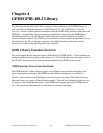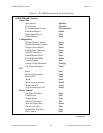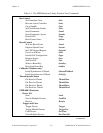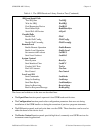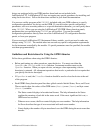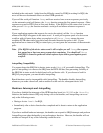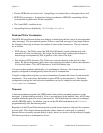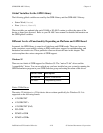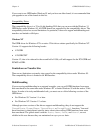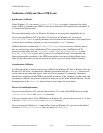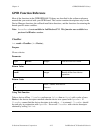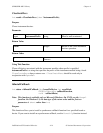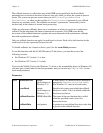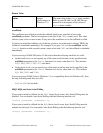
Chapter 4 GPIB/GPIB-488.2 Library
© National Instruments Corporation 4-9 LabWindows/CVI Standard Libraries
• The last GPIB call was a board call. Autopolling is re-instated after a subsequent device call.
• GPIB I/O is in progress. In particular, during asynchronous GPIB I/O, autopolling will not
occur until the asynchronous I/O has completed.
• The "stuck SRQ" condition exists.
• Autopolling has been disabled by IBCONF or by ibconfig.
Read and Write Termination
The IEEE 488 specification defines two methods of identifying the last byte of device-dependent
(data) messages. The two methods permit a Talker to send data messages of any length without
the Listener(s) knowing in advance the number of bytes in the transmission. The two methods
are as follows.
• END message. The Talker asserts the EOI (End Or Identify) signal simultaneously with
transmission of the last data byte. By design, the Listener stops reading when it detects a
data message accompanied by EOI, regardless of the value of the byte.
• End-of-string (EOS) character. The Talker uses a special character at the end of its data
string. By prior arrangement, the Listener stops receiving data when it detects that character.
You can use either a 7-bit ASCII character or a full 8-bit binary byte.
You can use these methods individually or in combination. However, the Listener must be
properly configured to unambiguously detect the end of a transmission.
Using the configuration program, you can accommodate all permissible forms of read and write
termination. (You cannot force the handler to ignore END on read operations.) The default
configuration settings for read and write termination can also be changed at run time using the
ibeos and ibeot functions.
Timeouts
A timeout mechanism regulates the GPIB routines that transfer command sequences or data
messages. A default timeout period of 10 sec is preconfigured in the handler; thus, all I/O must
complete within that period to avoid a timeout error. The default timeout value can be changed
with the IBCONF utility. In addition, you can use the NI-488 board function call ibtmo to
programmatically alter the timeout period.
Regardless of the I/O and Wait timeout period, a much shorter timeout is enforced for responses
to serial polls. This shorter timeout period takes effect whenever a serial poll is conducted.
Because devices normally respond quickly to polls, there is no need to wait the relatively lengthy
I/O timeout period for a nonresponsive device.



